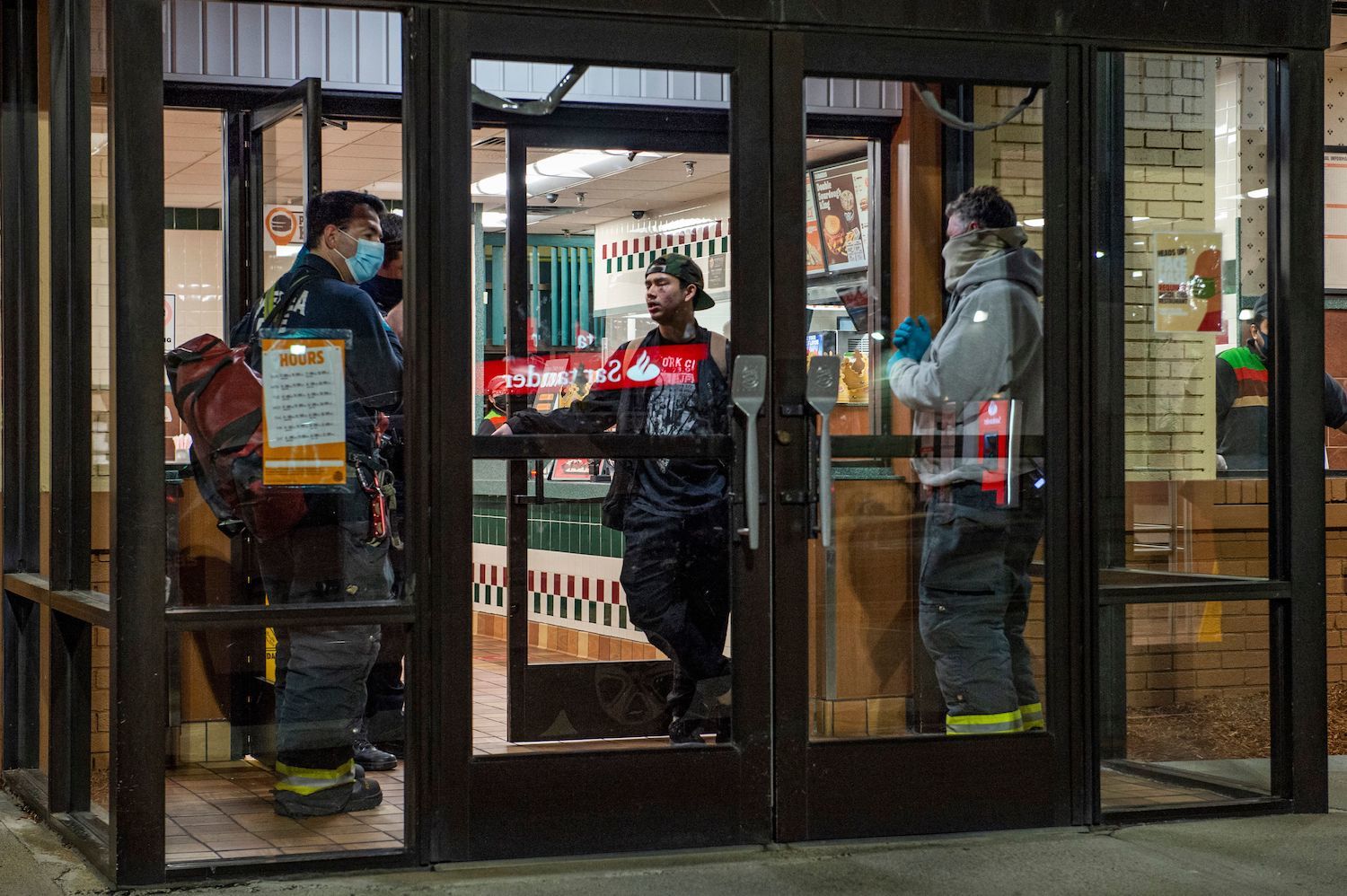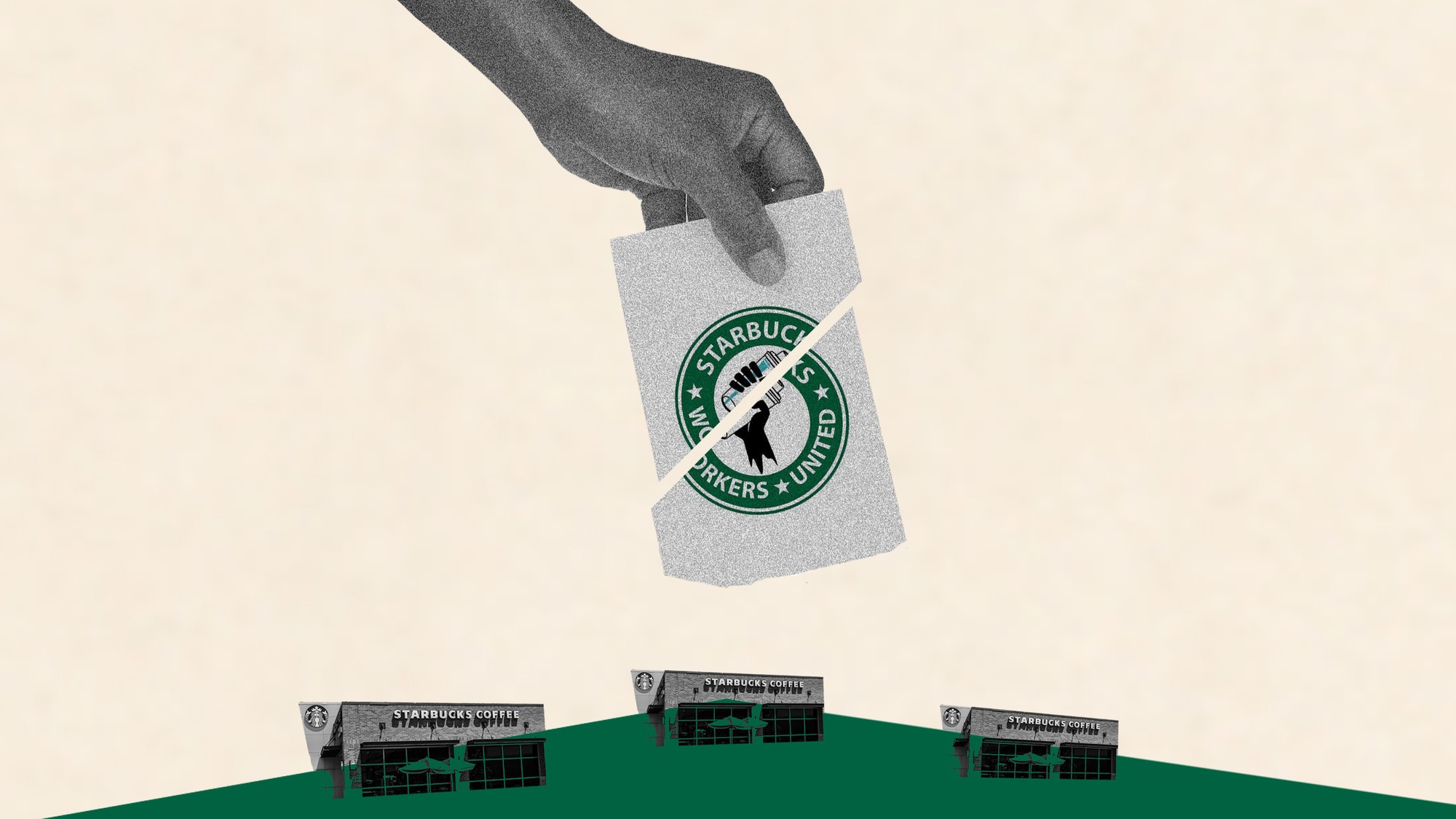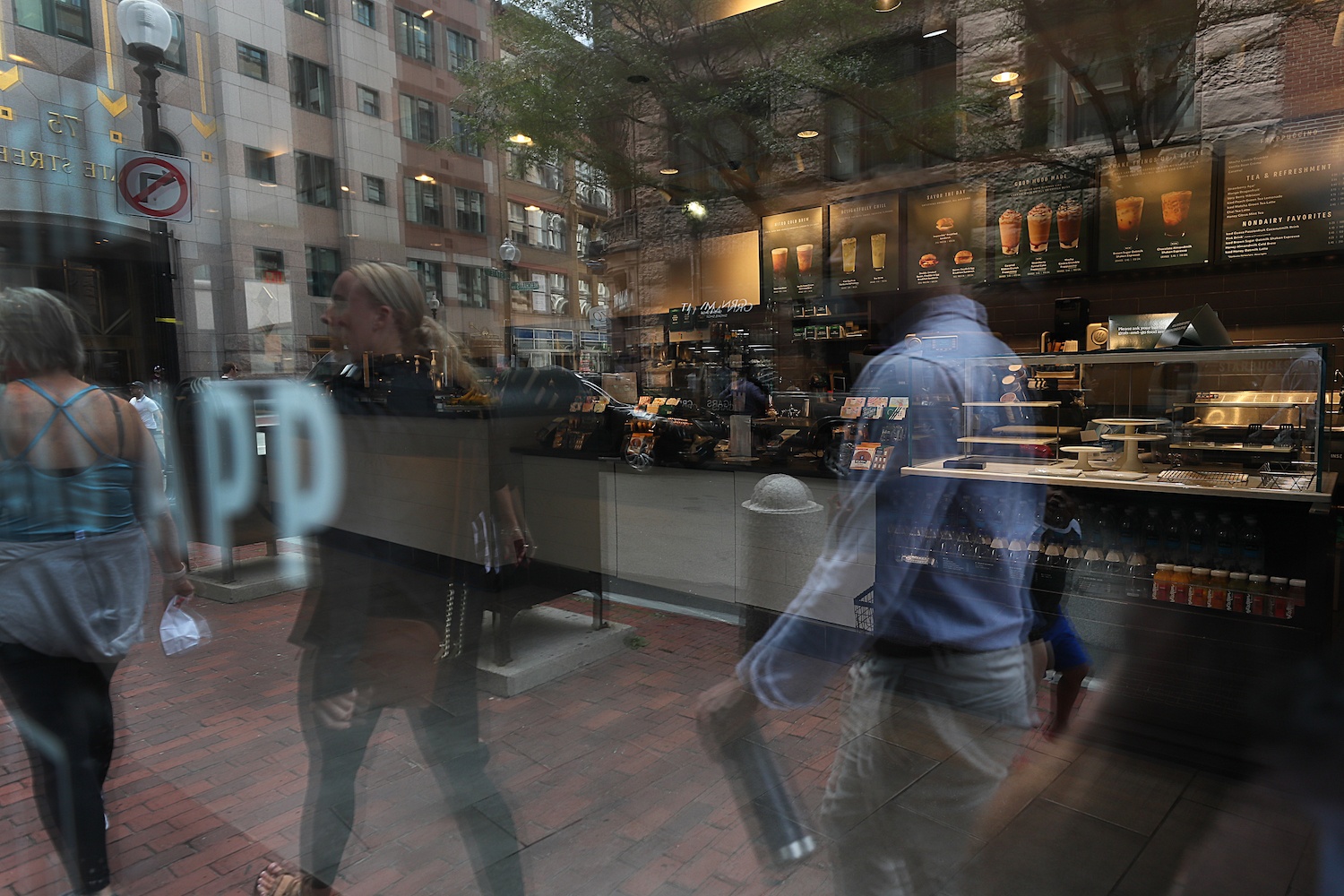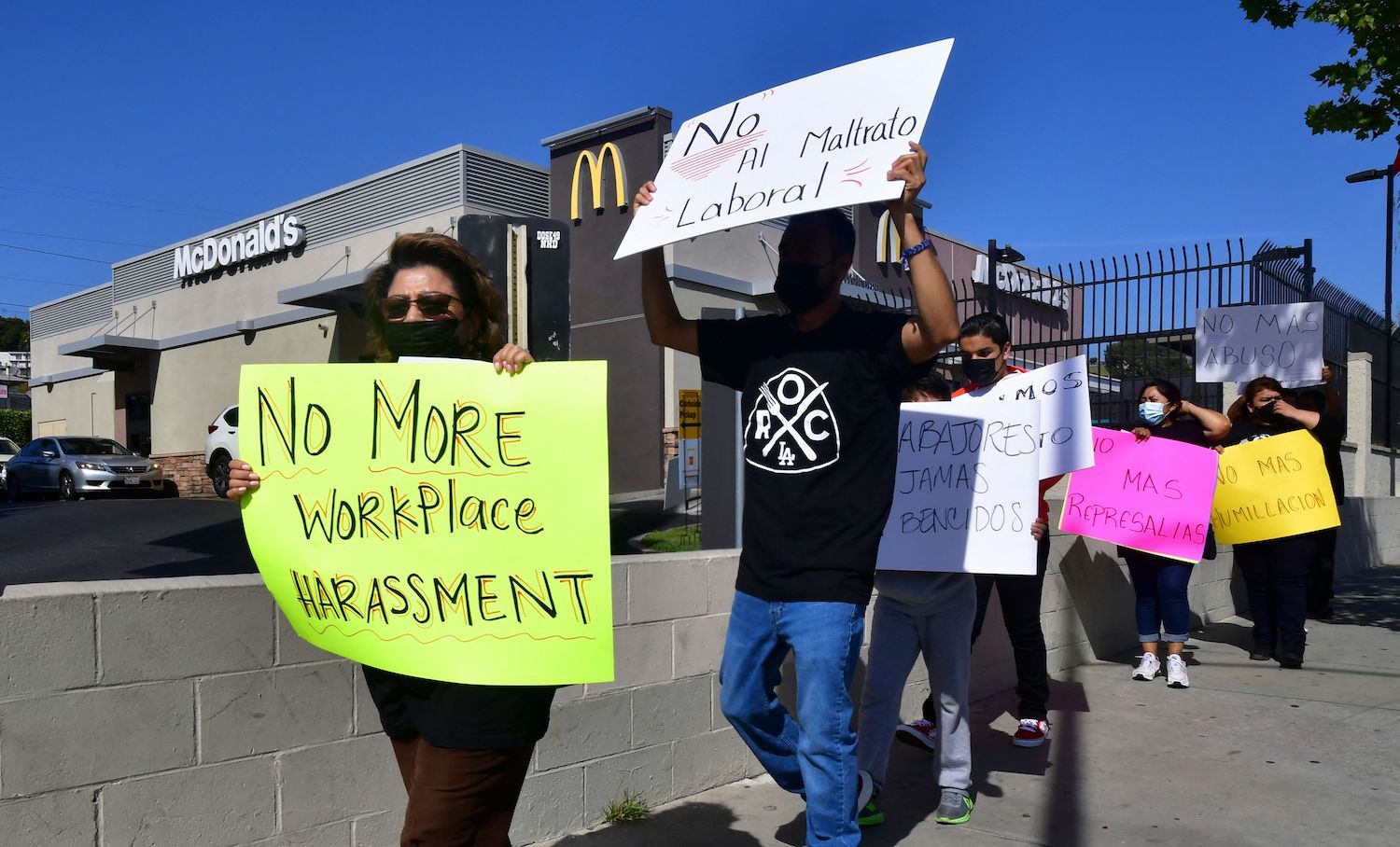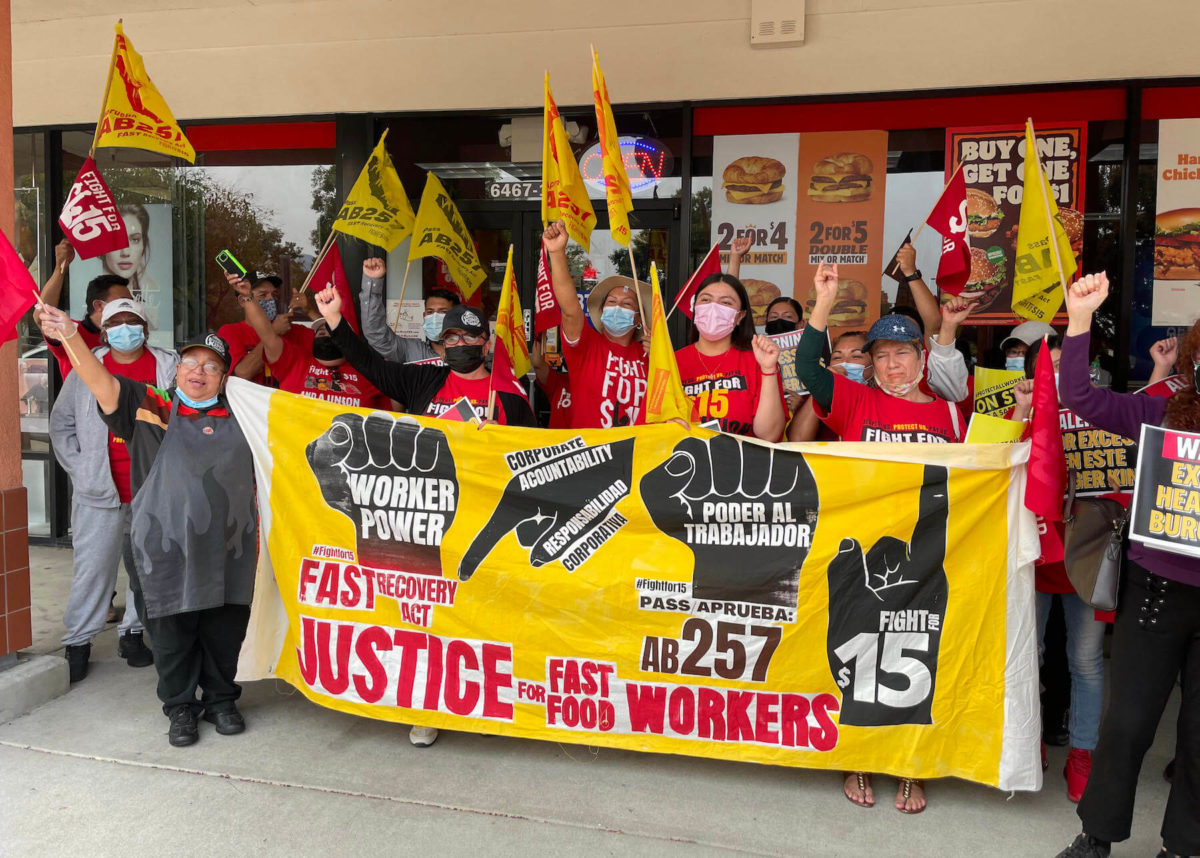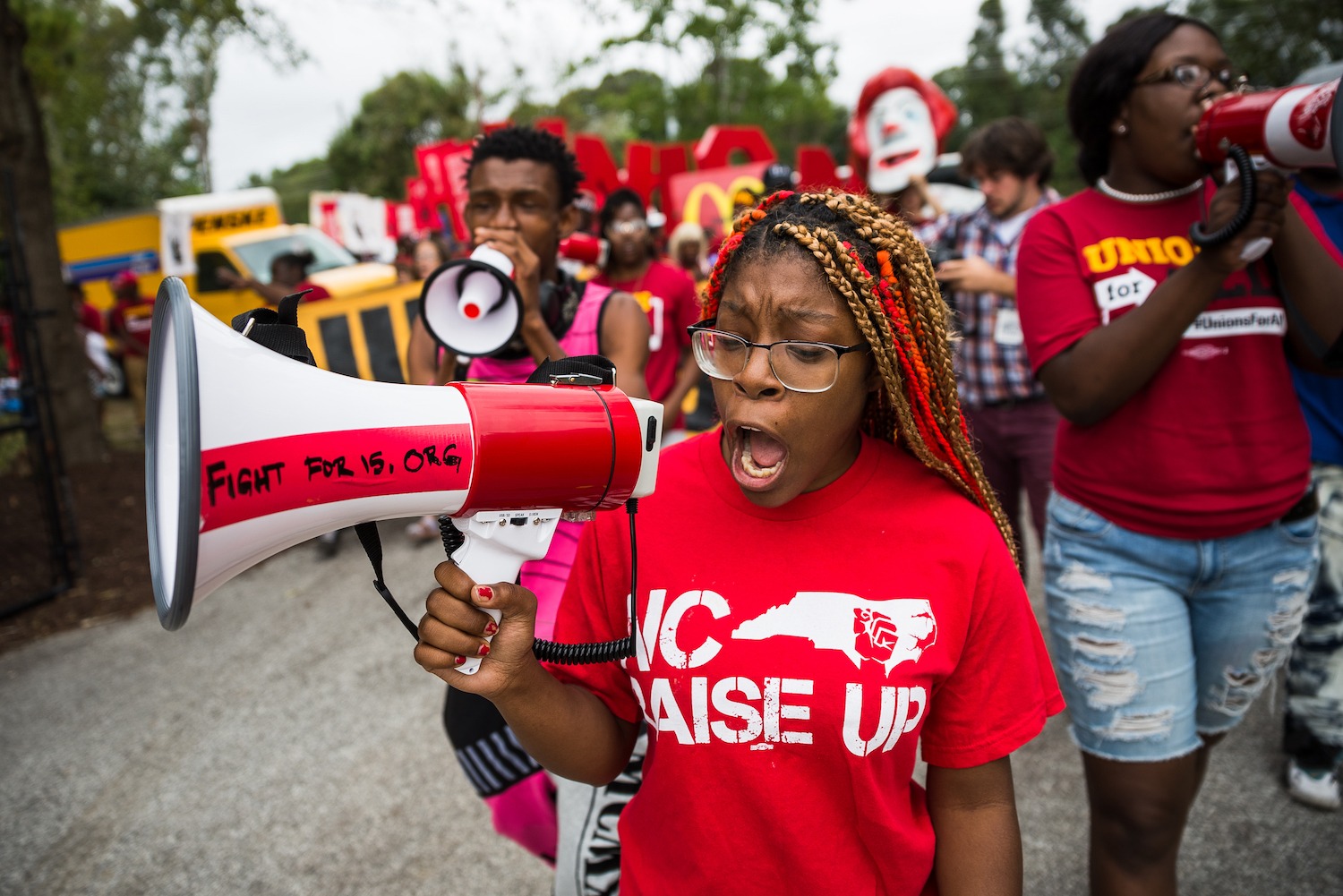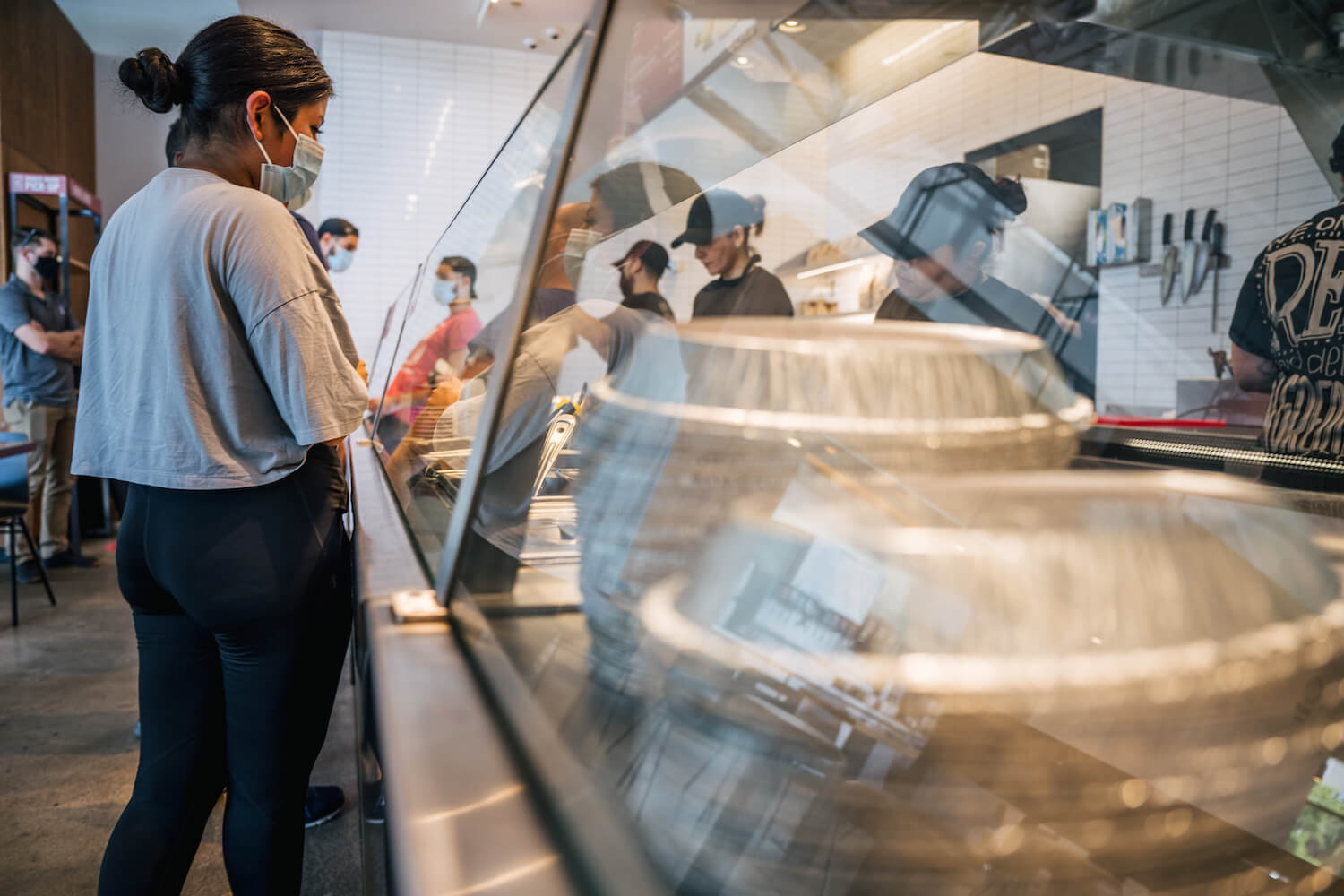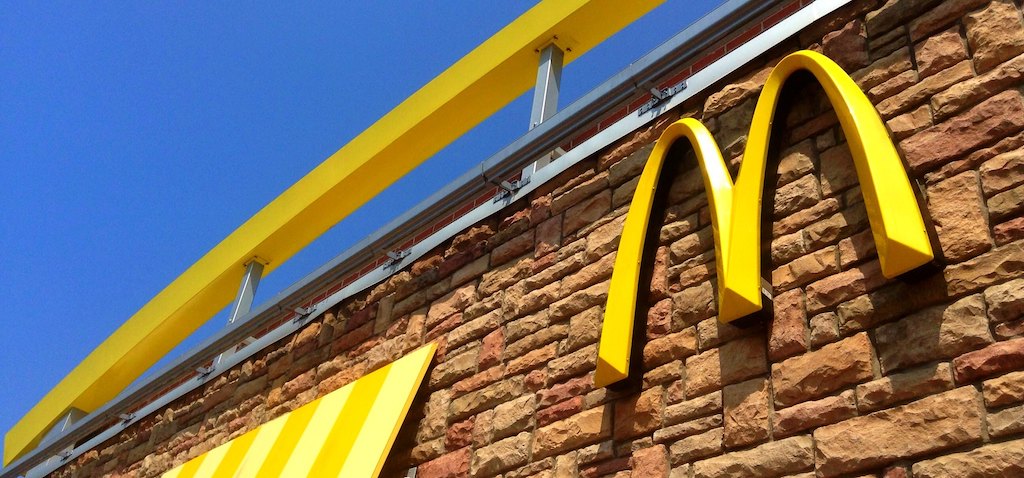Employees have been berated, attacked, had food thrown at them, and worse. A new report tallies 77,000 violent encounters on the job.
Pictured above: Officers speak to a Burger King employee that was punched in the face by an angry customer, asking him questions to find out more about what happened and if he needed medical attention in Chelsea, Massachusetts on May 1, 2021.
In the spring of this year, Perla Hernández, an employee at a Burger King store in Campbell, California, was making a burger when she heard some commotion in the dining area. Stepping out of the kitchen, she was terrified to see a customer brandishing a knife in what appeared to be a dispute with another diner, Hernández recalled in a recent interview. For safety, she cowered behind her manager who yelled at the customers to leave the restaurant. Later, when she suggested filing a police report, she said her manager shrugged off the suggestion.
Since being hired at Burger King nearly two years ago, Hernández said she’s never received any training on how to respond to violence in the workplace. She also said that due to understaffing, she is sometimes one of just two workers on a shift, and that the company doesn’t have a security guard on staff for her location. (Burger King did not respond to requests for comment.) On multiple occasions, she said, she’s feared for her life, due to belligerent behavior from customers. In instances where her managers have called 911, she said, police often enter with guns drawn, a sight that has also made her feel unsafe.
It’s no secret that fast food workers frequently encounter disruptive or even abusive customers: Just last month, a video of a chicken nugget “standoff” went viral, featuring a customer who refused to leave the drive-through lane of a Wendy’s store over the restaurant’s prices. In another video, a customer filmed himself berating a McDonald’s employee over their tone. Last year, an angry diner threw soda on a pregnant worker over a mistaken drink order, CNN reported.
Those experiences might not be all that unique, according to a new report on worker safety in the fast food industry. Last Wednesday, the Service Employees International Union (SEIU) published a first-of-its-kind analysis that put into numbers just how common issues of assault and harassment are at some of the most popular fast food chains.
“Many more workers describe living in fear as a result of threats from customers or being emotionally shaken by violent incidents they witnessed.”
The report drew from 911 call logs obtained through public records requests, focusing specifically on calls made from McDonald’s, Burger King, Carl’s Jr., and Jack-in-the-Box locations in California’s nine most populous cities. Between 2017 and 2020, the analysis found, these fast food restaurants were the sites of at least 77,000 violent or threatening incidents. The number includes both instances of abuse directed at workers, as well as conflicts between non-workers on a restaurant’s premises. To calculate this number, the report’s authors broke the 911 records into categories like assault, theft, and verbal threats based on incident descriptions, while filtering out calls corresponding to medical emergencies and traffic accidents. A handful of locations saw 911 calls at a rate of two or more calls per week.
The findings, the report authors wrote, point toward a “crisis of violence” in the industry—the burden of which is disproportionately borne by fast-food workers.
The report also cites anecdotal evidence based on interviews with workers, many of whom spoke about sustaining injuries and psychological trauma due to physical and verbal abuse. In some cases, workers say they’re impacted by violence that happens in the workplace, even when it’s not directed toward them.
“They’ve been choked by customers, pulled by the hair, grabbed at or pushed, and hit with food or other projectiles,” the report read. “Many more workers describe living in fear as a result of threats from customers or being emotionally shaken by violent incidents they witnessed.”
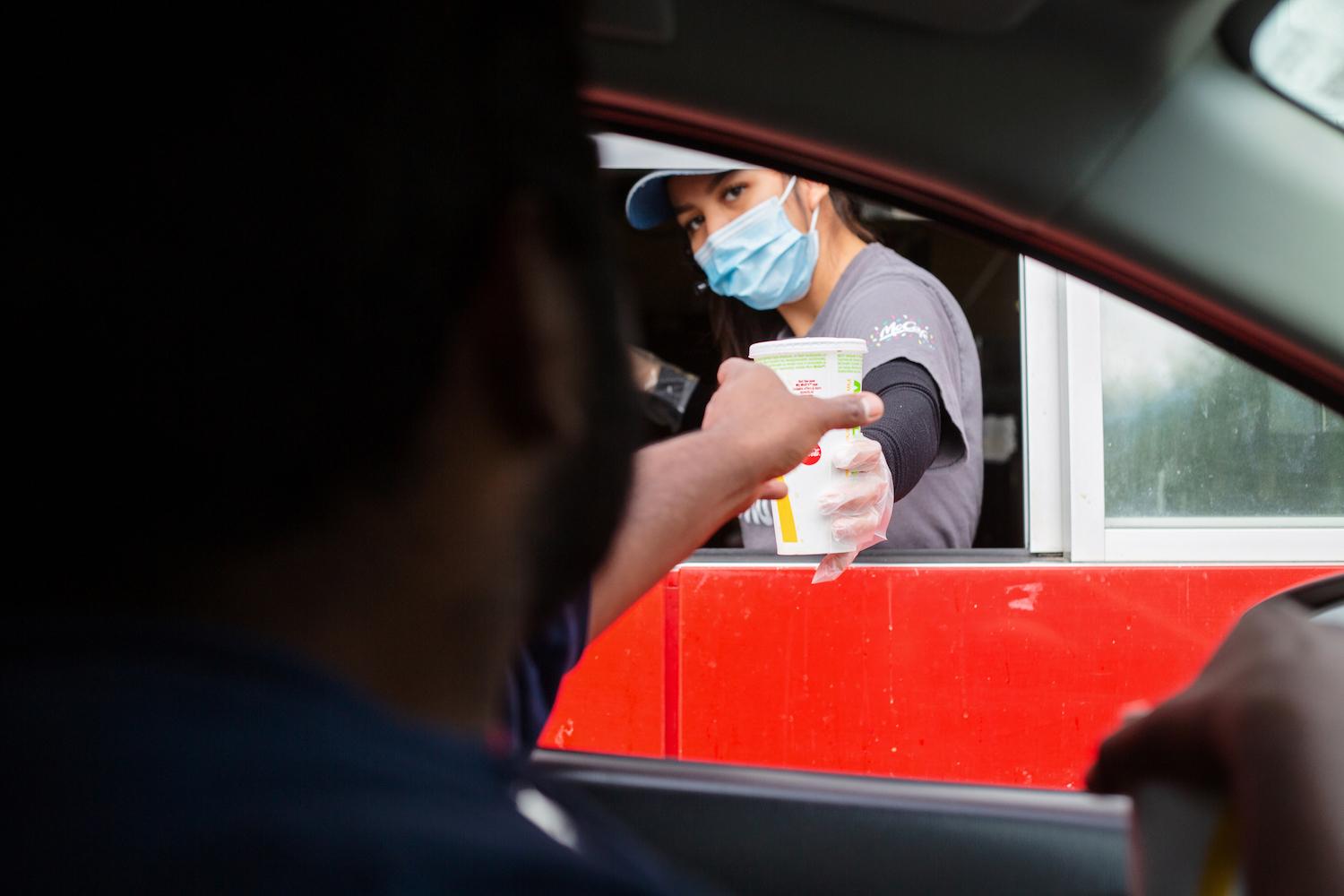
Not all incidents lead to 911 calls, and in many instances, workers might even be discouraged from reporting harassment or assault.
The report is part of a larger campaign by SEIU to secure better working conditions for workers. SEIU is one of the primary organizations behind the Fight for $15 campaign, which calls for a higher minimum wage. In California, the organization has endorsed the passage of the Fast Food Accountability and Standards Recovery Act, a bill that would create a statewide council to regulate pay, working conditions, and worker training programs in the fast food industry. As written, the proposal would require that the commission include fast food workers among its members.
The report’s authors argue that fast food restaurants have a range of resources available to improve the wellbeing of workers, such as hiring security personnel, reducing hours of operation, and providing safety training and resources for workers dealing with trauma.
“All too often, [fast food restaurants] refuse to provide medical treatment for injured workers, let alone mental health support,” it reads.
The report likely underestimates the prevalence of violence: Not all incidents lead to 911 calls, and in many instances, workers might even be discouraged from reporting harassment or assault—as Hernández experienced this spring.
“All too often, [fast food restaurants] refuse to provide medical treatment for injured workers, let alone mental health support.”
The 911 call record data also highlights a related issue, the authors said: When employers fail to make adequate investments into worker safety, taxpayers end up shouldering the cost. At one McDonald’s in Santa Monica, 911 calls became so frequent that the city ultimately ordered the restaurant to shut down, before allowing it to open at reduced hours. The report also pointed out that constant police presence can itself be harmful to both the people working in fast food restaurants, as well as those in the surrounding area.
“The cost to a community of calling the police when their presence is not necessary can be extremely high, particularly for communities of color,” the report wrote.
In response to emailed questions, McDonald’s challenged the report’s methodology.
“Historically, many emergency calls that mention McDonald’s have nothing to do with our operations or interactions between customers and crew but instead, for example, might reference McDonald’s as a nearby locator for first responders,” wrote the company’s director of global security Rob Holm in an emailed statement.
The report’s authors did note this limitation, writing that the methodology “is necessarily imperfect given the general lack of detail contained in the call type descriptions, as well as natural discrepancies in each police department’s–indeed, each individual officer’s–approach to record-keeping.”
“When it comes to protecting workers, [fast food companies] go, ‘We’re not going to give anybody any direction.’ That’s just irresponsible.”
Holms said that staff at McDonald’s corporate-owned locations undergo safety training, and that in the next year, it would implement “Global Brand Standards” to systematize incident reporting and workplace violence training across all franchise locations.
In a related blog post, the director also wrote: “While we do everything we can to keep all McDonald’s restaurants running smoothly without interruption, the unfortunate reality of sitting at the heart of 14,000 US communities with more than 800,000 individuals working under the Arches is that things happen.” [Emphasis the director’s own.] (We reached out to Carl’s Jr, Jack in the Box, and Burger King with questions and will update this story if they respond.)
Taken together, workers’ anecdotal experiences and the 911 call log data paint a stark picture of a hidden safety crisis in the fast food industry—one that has been largely neglected by the top brass of the biggest players, said one worker safety expert.
“Parent companies set certain requirements for their franchisees, ‘Your store has to look like this, your food has to taste like this, you have to cook it this way,’” said Deborah Berkowitz, a worker safety and health fellow at Georgetown University’s Kalmanovitz Initiative for Labor and the Working Poor. Berkowitz previously worked as chief of staff and senior policy adviser for the Occupational Safety and Health Administration (OSHA), the federal agency that oversees worker safety. “But when it comes to protecting workers, they go, ‘We’re not going to give anybody any direction.’ That’s just irresponsible.”
Note: An SEIU staffer provided translation assistance for this story.
